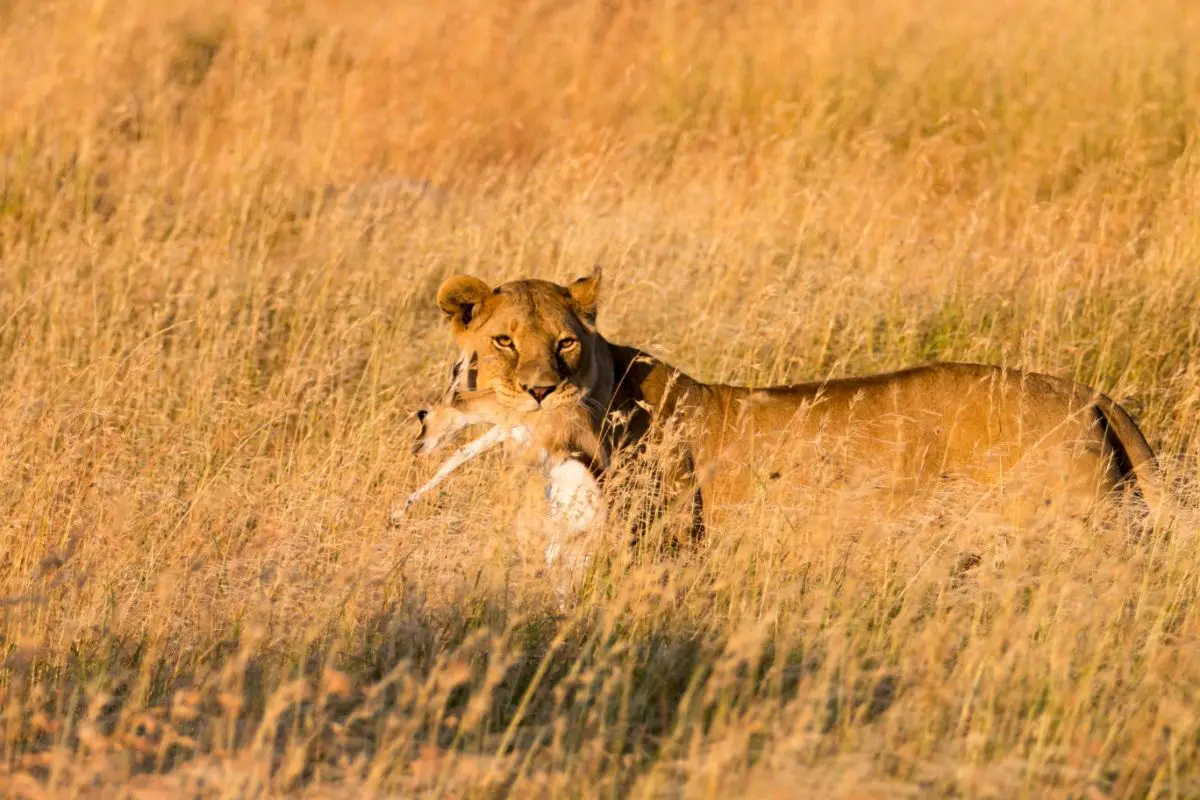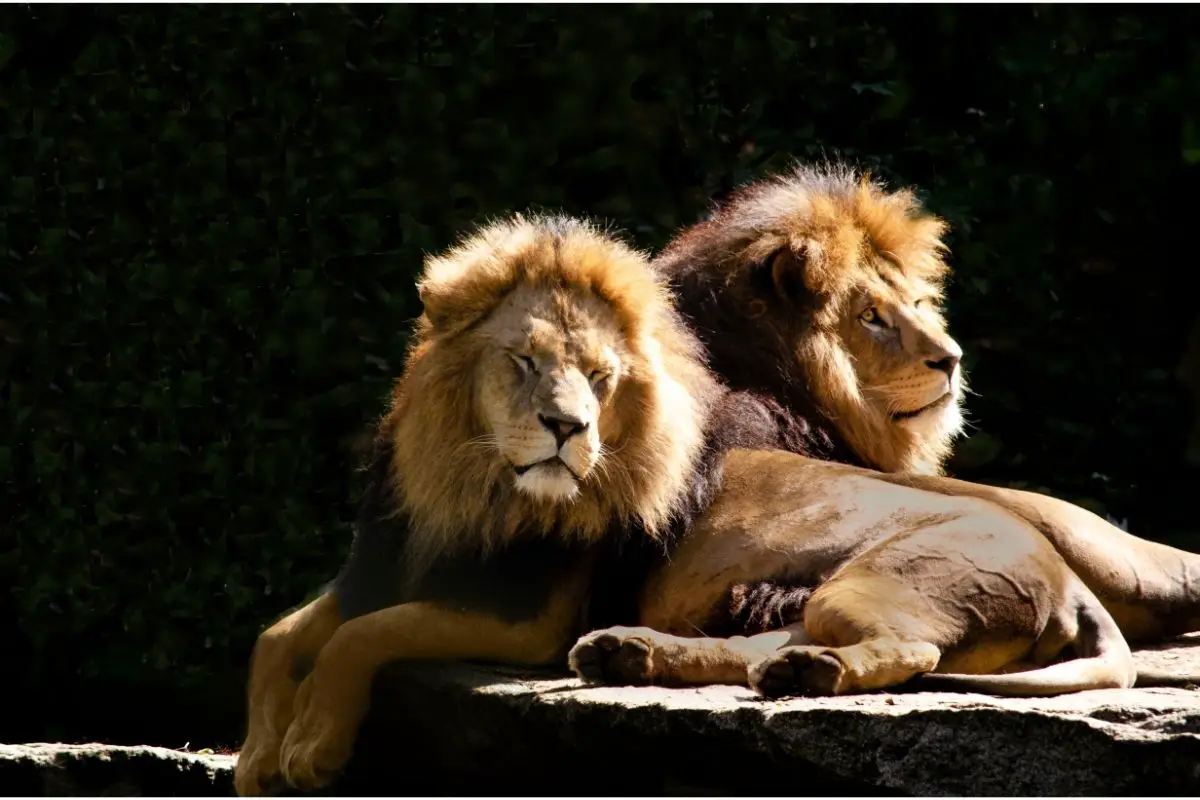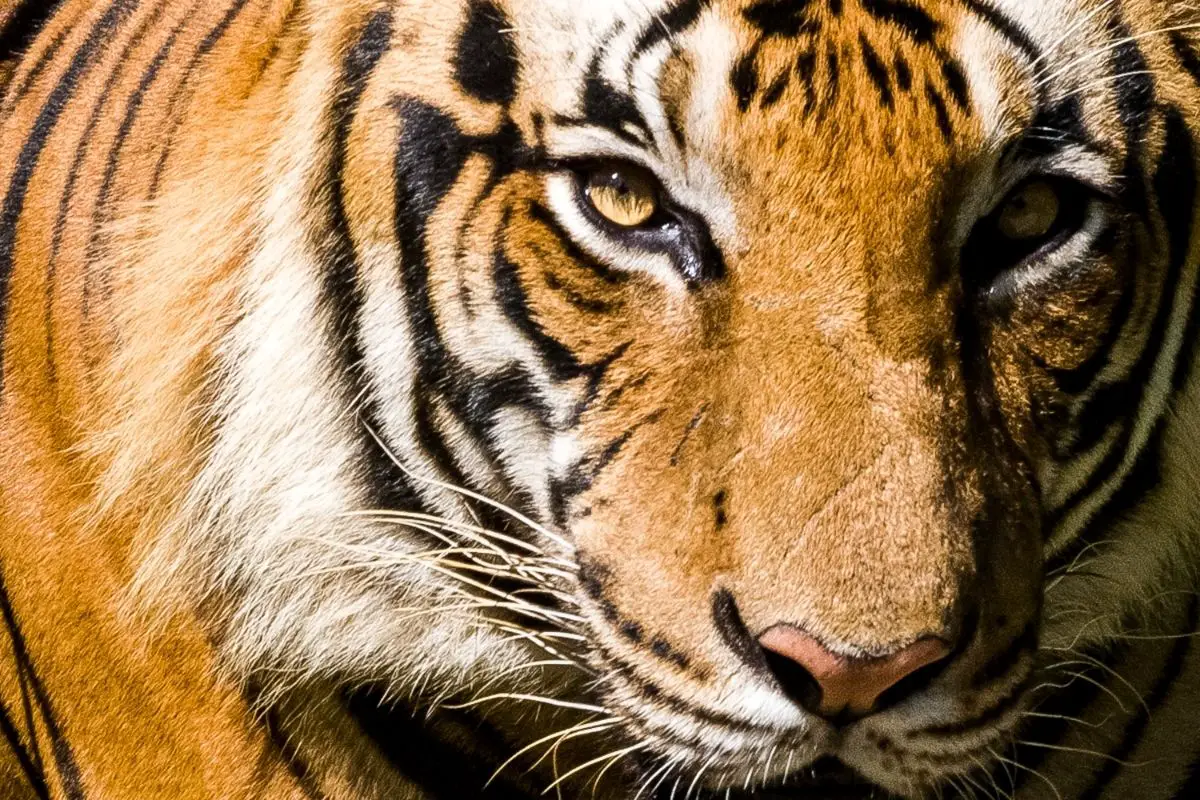Lions are big eaters – but of course, a cat that size needs to eat a lot in order to keep going!

They’re known for eating pretty much anything that can dig their claws into – and they’ll even scavenge food from other predators, and eat carrion!
Are gazelles on the list of lion’s favorite foods? You’ll find out here!
Do Lions Eat Gazelles?
Yes, lions do in fact eat gazelles! Lions love to eat a wide variety of prey – and gazelles are definitely on the list of foods that lions love.
In fact, they’re not the only big cat that likes to eat gazelle either! Leopards, panthers, and cheetahs also hunt, kill, and eat gazelles.
In fact, although lions do their fair share of gazelle hunting, it’s actually panthers and cheetahs that are a bigger danger.
Life in the wild is hard and cruel sometimes, unfortunately.
And that means that a big cat like a lion looking for a meal will pick off a slower, weaker gazelle from a pack in order to kill and eat it.
They’re not looking for a fair fight, of course – not that even a fast, strong, and healthy gazelle could put up a fair fight against a lion.
Therefore, the ones that can’t run quick enough- the slow, the old, the weak, the young – they’re in big trouble when a pride of hungry lions shows up.
They’ll track, isolate, and secure the easiest kill they can – after all, life is hard for lions too, and if they don’t kill and eat that they can, they’ll die.
As they’re pretty large animals, all things considered, a gazelle makes for a really good meal for a pride of lions.
Of course, it’s not easy for the lion – and if the lions don’t play it smart, the gazelle can escape their hunt and frustrate the lion in their search for food.
Lions can move with a deadly speed too, but a gazelle can outpace it in short bursts.
A tricky gazelle could well evade death using its speed – so the lions have to be cunning. Working in groups makes hunting gazelle a lot easier for them.
About Lions

Lions are some of the most famed and revered predators in the animal kingdom.
They’re considered masters of their domain, and have long represented the strength of Africa.
Indeed, so legendary is their reputation, that the lion is used as a symbol in this way in many countries where the lion has never natively roamed.
They’re the second largest of the big cats, just behind the tiger.
A male adult lion, so famed for its mane, can reach an astonishing weight of up to 550lb – although it’s thought that, under ideal conditions, a lion could well grow slightly larger.
They are an extremely social species, generally preferring to group together.
The groups that they form are called prides, and they are usually made up of some adult males, some females, and any cubs that have been born.
The adults of the pride work together while hunting – the females taking care of the actual hunt themselves, while the males guard for predators.
Lions are found in many regions in sub-Saharan Africa, and there is at least one population known in India too.
However, the number of lions in the wild is so much smaller than it was even 25 years ago.
Indeed, the domain of the lion used to be far wider-reaching than it is today.
They used to roam not only their current area of sub-Saharan Africa, but could also be found in areas of both Asia and Europe.
However, as the human species has developed, we’ve played a large part in driving the lion from their previous kingdom.
We’re not the only reason that lions have lost so much land – but it’s fair to say that we’ve played a large part in the process.
It is estimated that the number of lions left in the wild is currently at an astonishingly low number. There are thought to be only around 23,000 wild lions left in the world.
About Gazelles
Gazelles are magnificent, beautiful creatures that can mostly be found roaming Africa.
They can be found in many African biomes, having a presence not just on the grasslands and savanna, but also in the desert.
Perhaps in part due to its ubiquity, the gazelle also has symbolic meaning amongst many Africans.
Gazelles are herbivorous animals. They eat local vegetation to survive – grasses and plants are a good meal for gazelles.
It’s apparently possible that a gazelle can go their entire life without drinking water – which of course must mean that they can get their fluid needs from eating plants.
Gazelles are a type of antelope. They are known for their astonishing swiftness – some being able to sprint at up to 60mph in short bursts.
They can also maintain a running pace of around 30mph, meaning that despite their slender frames, they’re able to use agility as a defense against predators.
They’re on the small side, as far as most antelopes are concerned. The majority of gazelles reach a height of between 2 and 3.5 feet from floor to shoulder.
They usually tend to group together in herds – which can prove to provide safety in numbers against hungry predators.
After all, a gazelle in a large group stands a better chance of being the one that doesn’t get caught out, rather than one that finds itself alone.
These herds can be absolutely huge in number, with some herds having up to 700 members. Not all herds are of this size, however.
Some herds are even segregated by gender – such as with the Thomson’s gazelle.
Female Thomson’s gazelles live in groups with their young separated from the males, who either live with other males in small groups or even roam solo.
Conclusion
Gazelles are common prey for lions – and, unfortunately for the poor gazelle, for quite a few other animals too!
Hopefully this guide has helped you to learn a little about lions, gazelles, and – sadly – how they often meet at mealtimes!
- Sink Your Teeth Into This: Analyzing the Powerful Lion Bite Force - September 8, 2023
- Siberian Tigers: Everything You Need To Know - September 4, 2023
- Do Lions Eat Humans? Understanding Lion Aggression and Risks - September 4, 2023









